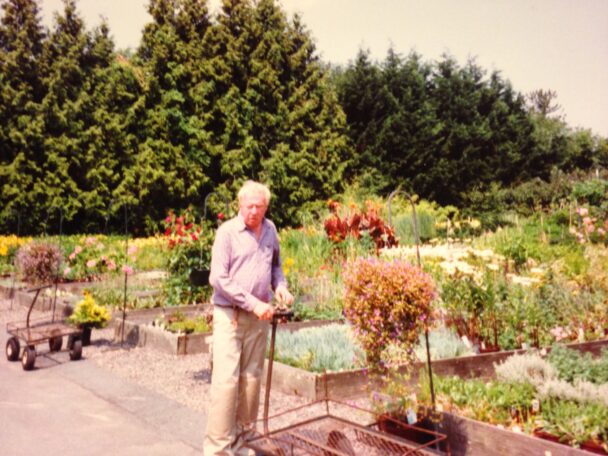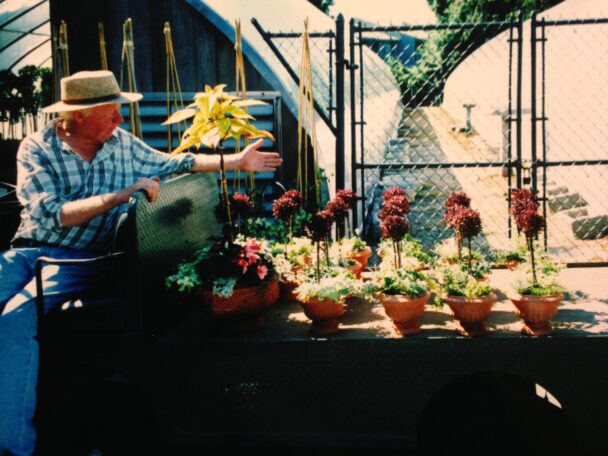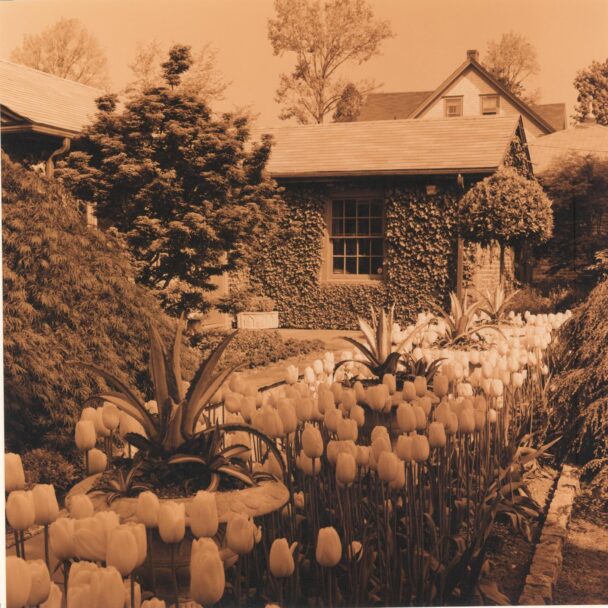Allen Clifton Haskell (1935-2004) has been described as “a nurseryman with an artist’s eye.” He symbolizes the best of New Bedford – grit, determination, ingenuity and an outward vision that once brought New Bedford whalers to every corner of the globe and later won international acclaim for Haskell as everyone from European royalty to local do-it-yourself gardeners made pilgrimages to his fabled Shawmut Avenue nursery described as “heaven on earth.”
Haskell created an 6-acre urban paradise – a touch of Old World restrained elegance with meandering cobblestone paths, ivy-covered stone buildings, strutting peacocks and rare plant specimens like the European hornbeam hedge rising over a stone wall and a 250-year old American dogwood – in a humble, working-class neighborhood on busy Shawmut Avenue. The Boston Globe described Haskell’s nursery as glowing with “the patina that graces the best old gardens.”
He was noted for his world-famous hosta collection with over 47 varieties cultivated and grown working with hosta hybrid specialist Mildred Seever of Dedham, his cultivation of 40 varieties of ivies and his excellence in English, French and Japanese gardening styles.
Haskell won international acclaim for his genius that attracted the attention of Queen Beatrix of the Netherlands, Jacqueline Kennedy Onassis who asked him to help with her daughter Caroline’s wedding in Hyannisport, and Martha Stewart was also a frequent visitor and he often appeared on her show.
Haskell was named a Great American Gardener by the American Horticultural Society and received a rare tribute in being inducted as a permanent member of the Smithsonian Institution. He was called “the king of topiary,” “an epic figure in American gardening” and “an American treasure,” according to Yankee magazine.
In a New York Times obituary, Tom Strangfeld, director of horticulture at the Massachusetts Horticultural Society, said: “There was Allen, and then there was everybody else. I’ll never forget a crabapple he forced into bloom and surrounded with this enormous collection of azaleas. It was like a painting at the Museum of Fine Arts.”



